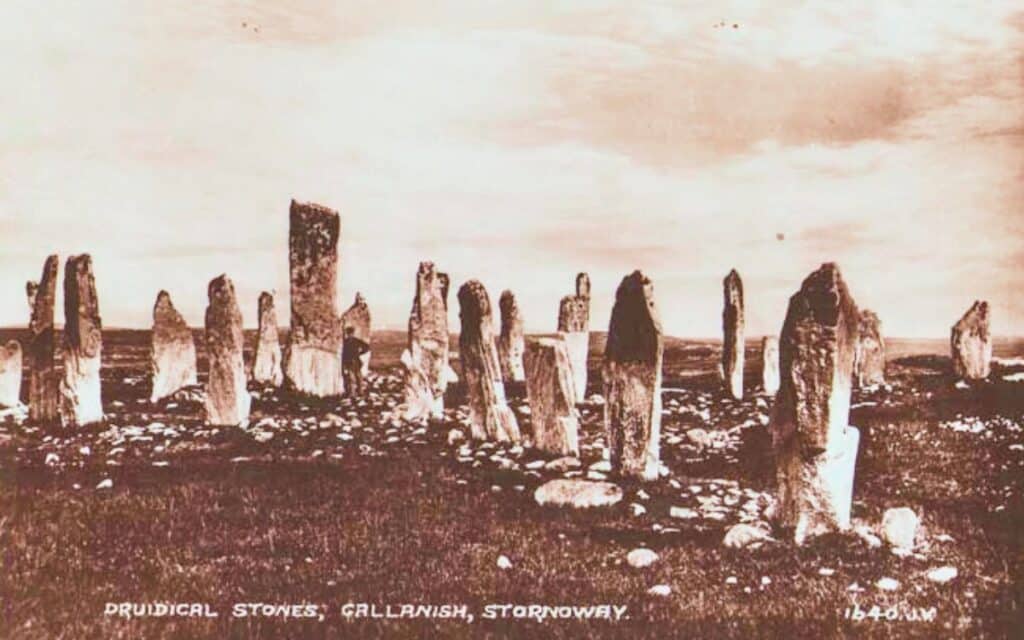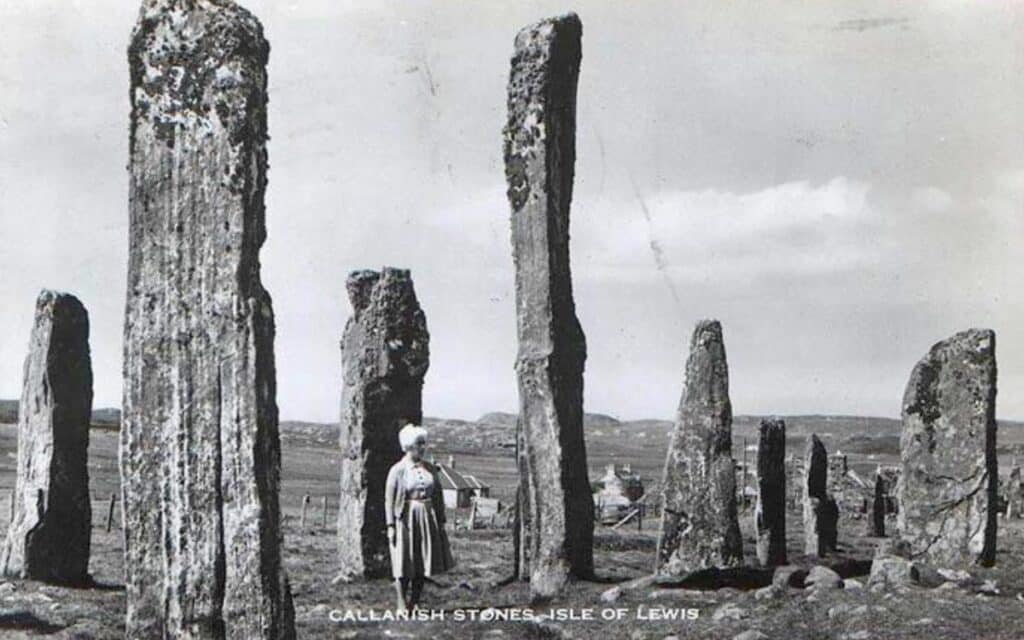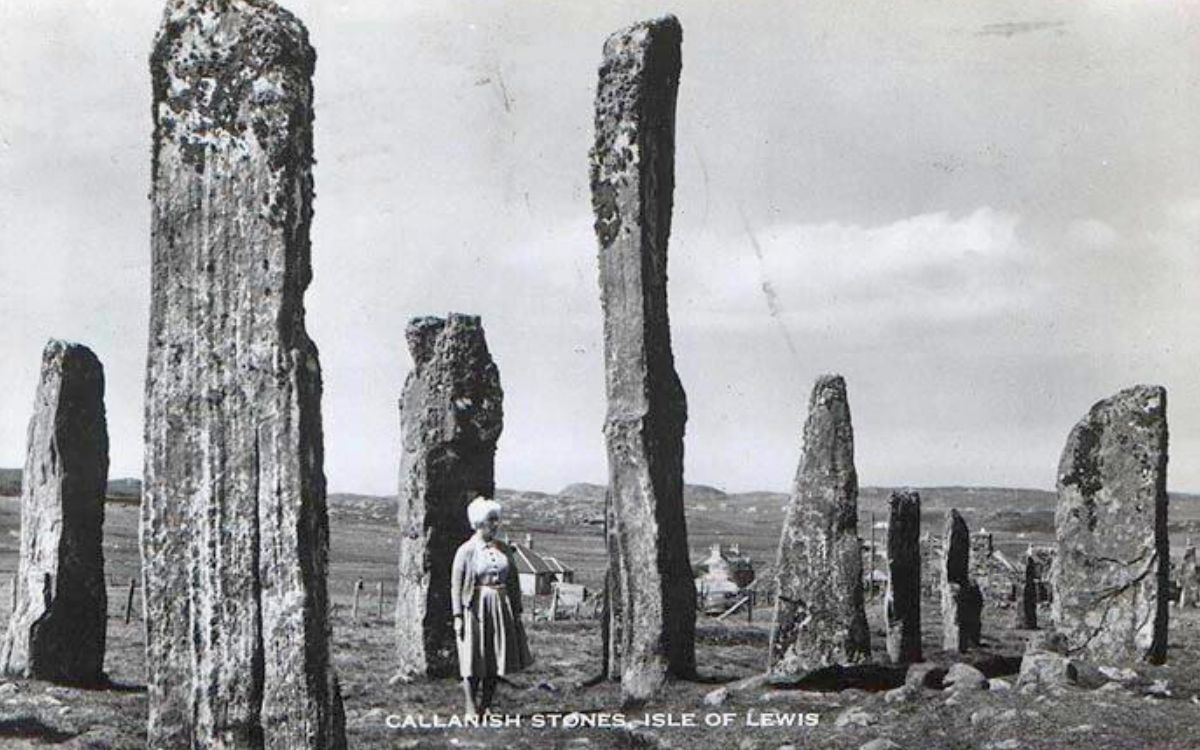The Callanish Stones, on the Isle of Lewis, are ancient monuments older than Stonehenge and the Pyramids. We look at why they’re one of Scotland’s most popular and mysterious tourist sites

What Are the Callanish Stones?
The Callanish Stones are an mysterious arrangement of standing stones located in the village of Callanish on the Isle of Lewis, in Scotland’s Outer Hebrides.
While the official name is the Callanish Stones, locals often refer to them as Calanais. They are also known as Fhir Bhreige, which translates to “the false men,” a nod to the local legends that suggest these stones are petrified giants.
Managed by Historic Environment Scotland, the site consists of 13 primary stones forming a circle, with a central monolith towering at around 4.8 meters. Built during the Neolithic era, these stones are older than both Stonehenge and the Egyptian pyramids.
History and Folklore of the Callanish Stones
The stones were erected around 5,000 years ago and were a focal point for rituals and ceremonies for at least 2,000 years.
Archaeological research, including excavations in the early 1980s by Patrick Ashmore, suggests that the site may have served as an astronomical observatory.
The Calanais Stones align with certain lunar and solar events, adding weight to this theory. Interestingly, the stones are all made of the same rock type, the local Lewisian gneiss.

The Callanish Stones are steeped in folklore and local legends. One popular tale suggests that they are giants who were turned to stone for refusing to convert to Christianity.
Another legend speaks of the “Shining One”, an entity that is said to walk the length of the stone avenue on midsummer mornings.
These myths add a layer of mystique to the site, making it a popular attraction, especially during the Summer Solstice.
Beyond the primary circle known as Callanais I, there are 10 more stone circles within a 10km radius, each with its own unique features.
The ancient site was abandoned around 1500 BC and was covered in peat until it was cleared in 1857.
The stone circle draw thousands of tourists every year, and ongoing efforts are in place to preserve the site and prevent erosion from foot traffic.
Today, the Callanish Stones continue to be a subject of both scientific research and mystical speculation. The site is carefully managed to balance the needs of tourism and preservation.
With the next lunar standstill predicted for April 2025, interest in the site is expected to surge, as people from around the world come to witness this rare astronomical event.
5 Interesting Facts About Callanish Stones
- Pixar staff visited The Callanish Standing Stones during their research for the animation film Brave 2012.
- The 5,000-year-old stones were featured in the 2012 Olympic torch relay.
- The Outlander TV series based its fictional stone circle, near Culloden called Craigh na Dun, on the Callanish stones.
- Bank of Scotland credit cards have included the image of Calanais Stone Circle.
- The stones have appeared in music videos, songs and album covers, from artists including Ultravox, Julian Cope and The Waterboys.
How to Get to Callanish/Calanais
Getting to Callanish is part of the adventure. The Isle of Lewis is accessible by ferry from Ullapool on the Scottish mainland, or by air, landing at Stornoway Airport.
From Stornoway, it’s a straightforward drive to the village of Callanish. Public transport options are also available but are less frequent.
The address is Calanais, Isle Of Lewis HS2 9DY.
Have you been to the Callanish Stones near Calanais the Isle of Lewis in Scotland? Tell us about your experience in the comment section below!




On the Glasgow Parks Astronomy Project, where I was Manager and we built the first astronomical stone circle for 3000 years, (in Sighthill, and now reopened to the public after reconstruction), my second-in-command was the late John Braithwaite, afterwards Scotland’s last manufacturer of astronomical telescopes. 8 or so years earlier he had married a doctor from Lewis, and when she took John up there to meet his future in-laws, they drove out to Callanish. As they were in the central circle, another car drew up at the gate, and John recognised the occupant as a former colleague. He and Kate hid behind a stone as the newcomer walked up the avenue, and as he entered the circle, John cupped his hands and shouted, “Welcome, John Smith!” The sound seemed to come from everywhere and his victim leaped a foot in the air, but I don’t think this incident has been added to the spooky incidents reported at the site.